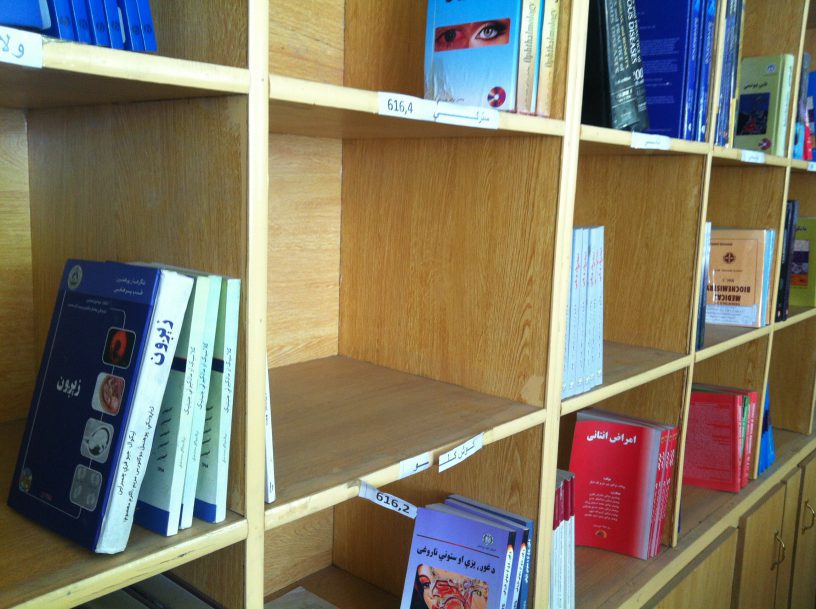 During my work for universities in Afghanistan as CIM expert at the Ministry of Higher Education in Kabul, I conducted many interviews with the representatives of German, American and other donors and institutions.
During my work for universities in Afghanistan as CIM expert at the Ministry of Higher Education in Kabul, I conducted many interviews with the representatives of German, American and other donors and institutions.
The donors pointed out again and again that they, above all, wanted to support the further training of lecturers by short-term measures in their own home countries, in third states as for example Turkey or India and also locally in Afghanistan.
The Ministry of Higher Education and the representatives of the universities in Afghanistan complained repeatedly about the lack of infrastructure such as classrooms, chairs, laboratory equipment, textbooks and teaching materials. Many of them point out that without this necessary environment, lecturers cannot offer effective teaching and students cannot profit enough from these well-trained lecturers.
At present 300,000 male and female students study at the 34 public and 94 private universities. Next year another 400,000 new 12th grade leavers will apply for the few places at the universities (100,000 at both state and private universities). This massive increase in the number of students unfortunately leads to a further deterioration of quality at the universities. The university rectors complain in every conference that they get more and more students every year exceeding their capacities by 50% to 100%. For example, if a university has places for 1,000 students, they will get 2,000 students without any advance warning or planning, without more lecturers, chairs and tables etc. etc. This is why many of those responsible and many professors complain of an increasing decline of teaching. For political reasons and in order to calm down these young applicants they are sent to public or private universities to give them a second or third chance. This increase in the number of students is connected to the growing number of 12th grade leavers. In 2014 we expect approx. 400,000 school leavers to take part in the admission exam (Konkor) for students who will then apply for one of the 40,000 places at public universities. This situation will become increasingly dramatic every year.
Unfortunately this development of the situation does not worry those responsible in Afghanistan or abroad. Both parties do their daily work without giving thought to the near future. Due to the lack of capacities and because of the bureaucratic processes the Ministry of Higher Education has spent less than 50% of its development budget in the year 2013/2014. Some international donors spend a lot of money but hardly meet the needs of the universities or only as long as funds are available. There is a lot of talk about the sustainability of projects but many measures are interrupted or things come to a stop as soon as the project finishes. For example, USAID supported English lessons in Kabul and many other provincial universities, building their own infrastructure. They did not cooperate with the existing English Departments and support their structures and capacities, so that English language lessons at these universities would continue after funds cease to flow. Another example is spending a lot of money developing and trying to introduce e-learning components. Unfortunately without success since not every lecturer or student has internet access and not all teachers and learners speak English. These programmes were kept alive for a while outside university structures but many are a thing of the past now (nothing gained, nothing lost).
E-learning and short-term further training measures are like the top floor of a house: we need the ground floor first and the lower floors. Without doubt these basics are classrooms, infrastructure, equipment, laboratories, adjusting study courses to the requirements of the local job market, setting up functioning university libraries instead of the existing storage facilities for books, printing textbooks etc.
It should not be necessary to ask donors for all this. Instead those responsible in Afghanistan should apply for funds at the Ministry of Finance, then collect the funds and spend them on the purposes mentioned above. Only where the Ministry and the universities have not managed to do this for whatever reason, only then donors should be asked to provide the necessary infrastructure. And only then Capacity Building can be tackled. This means hardware first and then software.
It comes as a surprise that further e-learning programmes are planned for the near future. I urgently advise to critically evaluate the programmes and projects of the past before starting new programmes in this area.
First of all course contents and books must be translated into Afghan languages and developed further. After this they can be made available in digital form (offline on CD and DVD as well as online).
I received a message today (1 Oct 2014) that the Ministry of Education will distribute 34 million schoolbooks to primary schools nationwide. The Minister for Education explained that 10 million of these books were printed in Afghanistan and the rest in Indonesia with financial support from USAID. During the last 15 years a total of 213 million schoolbooks for various grades and on different subjects was financed with USD 119 million by the United States, Denmark and the World Bank. But what is the situation with textbooks for the universities? With the exception of my 157 medical textbooks, not even 100 book titles in all disciplines were printed with a maximum of 1,000 copies.
Dr. Yahya Wardak, Advisor at the Ministry of Higher Education, Kabul, 1 Oct 2014





 Lebensmotto:
Lebensmotto: